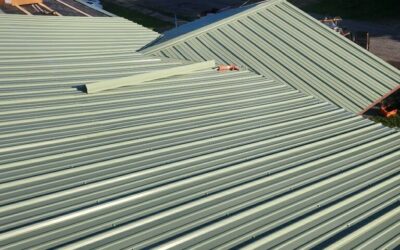Sheathing Roofing: Everything Homeowners Need to Know
When planning a new roof, understanding the role of sheathing roofing is essential. Sheathing, also known as roof decking, is the layer of material installed over your roof’s structural frame and under the shingles or other roofing materials. It serves as the foundation for your roofing system, providing stability, strength, and a surface for attaching shingles, tiles, or metal panels. Despite being less visible than other roofing components, proper sheathing installation is critical for a durable, leak-free roof.
This guide explains the types of sheathing, materials used, installation methods, common issues, costs, and tips for maintaining a strong roofing foundation. By the end, homeowners will have a clear understanding of why sheathing is vital and how it impacts the overall performance of a roof.
What Is Roof Sheathing?
Roof sheathing, sometimes called decking, is the structural layer that sits atop the roof trusses or rafters. It is typically made of plywood, oriented strand board (OSB), or other engineered wood products. Sheathing supports the roofing material, distributes weight, and adds structural rigidity to your home.
Key functions of roof sheathing include:
- Structural Support: Provides a stable base for roofing materials and distributes loads evenly across rafters or trusses.
- Weather Barrier: Works with underlayment to prevent moisture infiltration and protect the interior of the home.
- Attachment Surface: Provides a nailing or fastening surface for shingles, metal panels, tiles, or other roofing materials.
- Wind Resistance: Proper sheathing enhances the roof’s ability to resist wind uplift and extreme weather.
Without properly installed sheathing, even high-quality shingles or metal panels can fail prematurely.
Common Materials Used for Sheathing Roofing
Roof sheathing can be made from several materials, each with advantages and limitations.
1. Plywood
Plywood is the most traditional and widely used sheathing material. It is made from thin layers of wood veneer glued together for strength.
Advantages:
- Strong and durable
- Resistant to warping if properly treated
- Easy to work with during installation
Disadvantages:
- Can be more expensive than OSB
- Susceptible to moisture damage if exposed before roofing installation
2. Oriented Strand Board (OSB)
OSB is made from compressed wood strands bonded with adhesives. It is a cost-effective alternative to plywood.
Advantages:
- Affordable and widely available
- Strong and suitable for most residential applications
- Provides uniform thickness
Disadvantages:
- Sensitive to prolonged moisture exposure
- Can swell or degrade if water penetrates before roofing is installed
3. Tongue-and-Groove Boards
Some older or specialty roofs use solid wood tongue-and-groove boards. These provide a traditional aesthetic and extra rigidity.
Advantages:
- Very strong
- Can create an attractive underside in exposed ceilings
Disadvantages:
- Labor-intensive to install
- Higher material costs
4. Specialty Engineered Panels
Some roofs use structural panels made from engineered composites for specific applications, such as metal roofing or low-slope roofs.
Advantages:
- High strength and stability
- Often treated for moisture and fire resistance
Disadvantages:
- More expensive
- Limited availability in some areas
Sheathing Thickness and Spacing
The thickness and spacing of sheathing are critical to roof performance. Most residential roofs use:
- Plywood or OSB Thickness: ½ inch to 5/8 inch is standard for most homes. Thicker panels may be required for long rafter spans or heavy roofing materials like tile.
- Spacing: Panels are typically installed with a 1/8-inch gap between sheets to allow for expansion. Proper spacing prevents buckling and allows for ventilation.
Building codes often dictate the minimum thickness and spacing for sheathing based on roof slope, rafter spacing, and material type.
Installation Process for Sheathing Roofing
Proper installation of roof sheathing is essential to prevent leaks, sagging, or structural issues. The basic steps include:
- Inspect Roof Framing: Ensure rafters or trusses are level, properly spaced, and free of damage.
- Lay Panels Perpendicular to Rafters: Plywood or OSB panels are usually installed perpendicular to the supporting framing.
- Maintain Expansion Gaps: Leave a small gap (1/8 inch) between panels to account for wood expansion.
- Secure Panels: Use nails or screws recommended by local building codes. Typically, nails are spaced 6–8 inches along panel edges and 12 inches in the field.
- Stagger Seams: Offset panel seams between rows to enhance stability and prevent weak points.
- Inspect and Prepare for Underlayment: Ensure panels are flush, level, and free of debris before installing underlayment and roofing materials.
Professional installation ensures the sheathing provides a stable, durable base for your roof.
Common Issues with Roof Sheathing
Even new or properly installed sheathing can experience problems over time, especially if exposed to moisture or improper installation. Common issues include:
1. Water Damage
Water can infiltrate through damaged shingles, flashing, or valleys, causing the sheathing to rot, swell, or delaminate. Signs include soft spots, sagging, or mold growth.
2. Warping or Buckling
Improper spacing or installation can cause panels to warp, creating uneven surfaces that compromise roofing integrity.
3. Nail Pops and Fastener Issues
Incorrect nailing or panel movement can result in nails protruding through the sheathing, creating leaks and damaging shingles.
4. Mold and Mildew
Prolonged moisture exposure can promote mold growth, which weakens wood fibers and creates health hazards.
5. Structural Failure
Weak or damaged sheathing may not support heavy roofing materials like slate or clay tiles, leading to sagging or roof collapse in severe cases.
Sheathing Roofing for Different Roof Types
The choice of sheathing material and installation method varies depending on roof type:
1. Asphalt Shingle Roofs
- Plywood or OSB sheathing is most common
- Standard thickness ½ inch
- Proper underlayment prevents water infiltration
2. Metal Roofs
- Thicker plywood (5/8 inch) or specialty panels are recommended
- Panels must provide solid nailing surface for metal clips or fasteners
3. Tile Roofs
- Heavier materials like clay or concrete require thicker sheathing or additional support
- Structural reinforcement may be needed for older homes
4. Low-Slope Roofs
- Sheathing must be installed with proper slope and drainage considerations
- Engineered panels or plywood with moisture-resistant treatment is preferred
Costs of Roof Sheathing
The cost of sheathing roofing depends on material, thickness, and labor. Here’s an overview:
| Material | Cost per Square Foot | Notes |
|---|---|---|
| Plywood | $1.50–$3.00 | Common, durable, widely available |
| OSB | $1.00–$2.50 | Affordable alternative to plywood |
| Tongue-and-Groove | $3.00–$5.00 | Premium, labor-intensive |
| Engineered Panels | $3.50–$6.00 | Specialized applications |
Labor costs typically range from $2–$4 per square foot, depending on roof complexity and access. Total cost for sheathing a standard 1,500 sq ft roof ranges from $4,500–$10,500.
Maintenance Tips for Sheathing Roofing
Proper maintenance extends the lifespan of your sheathing and overall roof:
- Inspect Annually: Look for soft spots, cracks, or signs of water damage.
- Keep Roof Clean: Remove debris that can trap moisture against the sheathing.
- Maintain Gutters and Drainage: Prevent water pooling that can seep under roofing materials.
- Address Roof Leaks Promptly: Even minor leaks can cause extensive sheathing damage over time.
- Proper Ventilation: Attic ventilation reduces moisture buildup and prevents mold growth.
Signs You May Need to Replace Roof Sheathing
- Sagging or uneven roof surface
- Water stains or mold in attic
- Soft spots when walking on roof decking
- Nail pops or loose shingles
- Visible gaps between panels
Replacing damaged sheathing is critical before installing new roofing to ensure long-term protection and stability.
FAQs About Sheathing Roofing
1. How long does roof sheathing last?
With proper installation and protection, plywood or OSB sheathing can last 20–50 years, often outlasting roofing materials.
2. Can I install a new roof without replacing sheathing?
Yes, if the existing sheathing is in good condition. Damaged or weak sheathing should be replaced.
3. Does sheathing affect energy efficiency?
Indirectly, yes. Properly installed sheathing combined with insulation and ventilation improves energy efficiency.
4. What’s the difference between plywood and OSB?
Plywood is slightly stronger and more moisture-resistant, while OSB is more affordable and uniform in thickness.
5. Can I walk on roof sheathing during installation?
Yes, but safety precautions are necessary. Wear proper footwear and avoid stepping on unsupported areas.
Conclusion
Understanding sheathing roofing is essential for homeowners planning a roof replacement or new construction. Sheathing provides the structural foundation for your roof, supports roofing materials, prevents leaks, and adds stability against wind and weather. Choosing the right material—whether plywood, OSB, tongue-and-groove, or engineered panels—is critical for longevity, durability, and performance.
Proper installation, regular inspections, and maintenance ensure your roof remains strong and protective for decades. Addressing issues promptly, such as water damage, warping, or nail pops, prevents larger problems and costly repairs. Whether installing shingles, metal panels, or tiles, quality roof sheathing is the cornerstone of a secure, long-lasting roofing system.
By understanding the role of roof sheathing, homeowners can make informed choices, protect their investment, and enjoy a durable, reliable roof for years to come. 440-235-3124
 (440) 307-2060
(440) 307-2060

